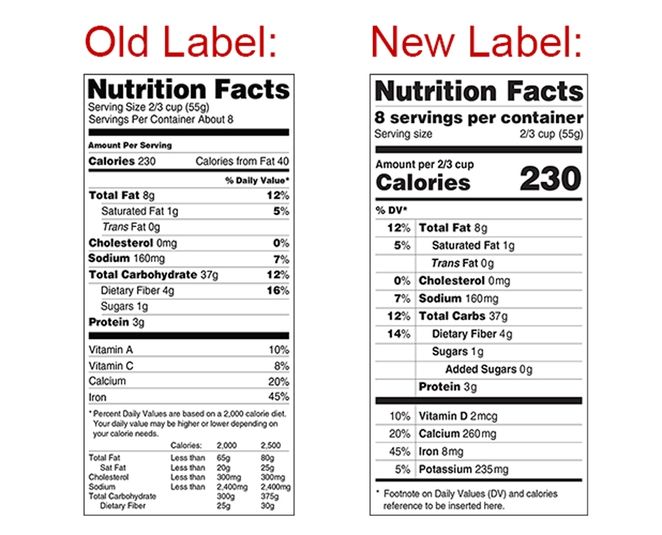
Are you a label reader? If not you should start doing so. How you nourish your body will directly reflect on your health and fitness. And unfortunately our diets are the main reasons we develop diseases like pre-diabetes, type 2 diabetes, heart disease and obesity.
Nourishing your body requires that you know the value and importance of certain nutrients in the foods you eat.
Nutrition labels offer a wealth of information about what’s contained in the food you put in your grocery basket. Take a closer look at them the net time you are shopping.
What’s a nutrition label?
A nutrition label is an information label attached to most packaged foods. It describes the macro and micronutrient make up of the contents and the nutritional value they supply when consumed. They vary from country to country but in general offer similar information.
In the US food labels are regulated by the FDA (Food and Drug Administration). They can determine the way foods are grown, harvested and processed and they have the authority to recall foods for various reasons.
How to read food labels
When reading or analyzing a nutrition label there a few sections to focus on. These are:
- Total calories and servings – This section tells you the amount of calories contained in the package. It also gives you an idea of how many servings you can expect to get from the container.
- Percentage (%) of daily value – Each package will list a % of daily value of each nutrient based on a 2000 calorie diet. A daily value of 2000 calories consumed each day is used a general guide. Some people will need to eat more or less than this based on their sex, age and the type of work they do.
- Nutrients to limit – The American diet has changed over the years. Fifty years ago we consumed more natural foods and did more physical work than we do today. Product manufacturers have altered the contents of their foods over the years to include more additives such as food coloring, more sugars, saturated fats and salt. Because these things are contained in many foods we eat it’s important that we limit or monitor the amounts of these nutrients. Remember that saturated and trans fats are the types we should avoid as much as possible.
- Nutrients to eat more of – These are beneficial nutrients that we should eat more of. For example, adding more fiber to your meals will help to offset some of the negative effects of eating too much of carbohydrates. And calcium is an important mineral to eat more of as we age. Include foods containing unsaturated or healthier fats in your diet. Things like olive oil, certain vegetable oils, nuts and fish all have an abundant amount of unsaturated fats.
- At the bottom of the nutrition label you will find a footnote (*) section listing the daily value of the nutrients contained in the product. Note that it’s based on a diet of 2000 calories per day.
The latest changes to nutrition labels
Nutrition labels have changed over the years based on the prevailing research at the time. The FDA last upgraded the nutrition label in May 20016. Most food manufacturers have until July 2018 to comply with the new changes so you might not see them on your food packages as yet. The major adjustments to keep in mind when looking at the new labels are:
- The serving size and the servings per container
- The calorie amount per serving is larger.
- “Total fat” replaces the words “calories from fat” – Keep in mind that it’s the quality of fats you eat and not the amount.
- The new label will now list any added sugars manufacturers put in their product such as high fructose corn syrup or honey.
- Vitamins A and C have been removed and Potassium and vitamin D are now included. Because the typical American diet is deficient in both these nutrient you are now able to determine how much you are consuming with each meal.
There are other subtle changes but I feel that these are the important ones to remember the next time you’re shopping for groceries.
Some facts to keep in mind
The 2000 daily calorie diet is an approximation.
If you are a man – your weight maintenance amount would be 2200 to 2500 cal./day and for weight loss it should be 1800 to 2000 per day.
For women – your weight maintenance amounts should be 1600 to 1800 cal./day and weight loss diet should be 1300 to 1700 per day.
Use these changes to tweak your diet. You don’t need any extra calories from sugary drinks and excess starchy products. By eating a natural diet you will get all the necessary nutrient in the correct amount.
When combined with a proper workout program, the type foods you eat will help maintain good health and fitness. And there is no better time to start than now.

Pingback: How to prevent pre-diabetes | How to look younger than your actual age
Pingback: How to prevent pre-diabetes | How to control your sweet-tooth cravings
Pingback: How to prevent pre-diabetes | Reversing pre-diabetes naturally